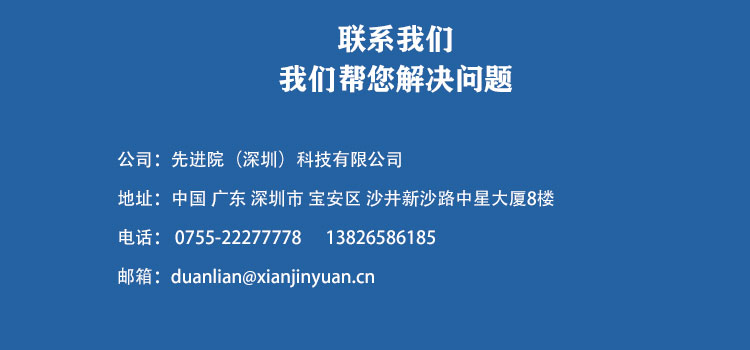

Hotline:0755-22277778
Tel:0755-22277778
Mobile:13826586185(Mr.Duan)
Fax:0755-22277776
E-mail:duanlian@xianjinyuan.cn
In the current trend of electronic devices becoming increasingly lightweight and compact, NFC (Near Field Communication) technology, as a key technology for achieving convenient wireless communication between devices, has been widely applied. However, the interference of metals on NFC signals has always been an important factor restricting its development. NFC anti metal absorbing materials have emerged, which can effectively resist the interference and absorption of metal on RF signals, ensuring the normal operation of NFC function. In order to better adapt to the demand for lightweight electronic devices, the lightweight of NFC anti metal absorbing materials has become an important research direction. This article will explore in depthNFC anti metal absorbing materialMethods and approaches to achieve thinning and thinning.
Traditional NFC anti metal absorbing materials often use absorbing powders such as ferrite. To achieve slimness, it is necessary to search for new powder materials with higher absorption performance. For example, some nanoscale magnetic materials, such as nano iron cobalt alloys, nano nickel zinc ferrites, etc., have higher magnetic permeability and dielectric constant than conventional materials due to their nanoscale effect, and can use thinner thicknesses under the same absorption effect. These nano powders can absorb and dissipate electromagnetic waves more effectively at the micro level, thus reducing the overall thickness of the material.
The matrix material should not only support the absorbing powder, but also have good flexibility and lightweight properties. Traditional polymer matrix materials often have a thicker thickness when meeting certain performance requirements. In recent years, some new high-performance polymers, such as polyimide (PI) and polyethylene naphthalate (PEN), have become ideal matrix material choices due to their excellent mechanical properties, thermal stability, and low density. They can effectively reduce the thickness of the material while ensuring its overall performance. In addition, some porous materials or aerogel materials with special structures have also been explored and applied to NFC anti metal absorbing materials. These materials have extremely low density and can enhance the absorption and scattering of electromagnetic waves through unique microstructures while achieving lightness and thinness.
By designing multi-layer composite structures, the absorption performance can be improved without increasing excessive thickness. For example, alternate the arrangement of absorbing layers with different performance and high transparency spacer layers. The absorbing layer can be composed of absorbing powders with different compositions or particle sizes combined with the matrix material to absorb electromagnetic waves in different frequency bands. The spacer layer plays a role in regulating the propagation path and phase of electromagnetic waves, allowing them to reflect, refract, and absorb multiple times in a multi-layer structure, thereby improving the overall absorption efficiency. This multi-layer composite structure can achieve a wider frequency band and higher strength absorption effect within a limited thickness, which helps to achieve material thinning.
The precise control of the microstructure of materials using micro nano processing technology can significantly improve their microwave absorption performance, thereby achieving thinning and thinning. For example, preparing absorbing materials with core-shell structure, hollow structure, or array structure. The core-shell structure can reduce high lossAbsorbing materialAs the core, the outer layer is wrapped with materials with good matching characteristics, which can enhance the absorption of electromagnetic waves and improve the overall performance of the material. Hollow structures can enhance electromagnetic wave scattering and absorption through unique internal spatial structures while reducing material mass. The array structure can achieve resonance absorption of electromagnetic waves and improve absorption efficiency through periodically arranged micro nano units. The design of these micro nano structures can effectively improve the absorption performance without increasing the material thickness, meeting the demand for lightweight and thin materials.
Traditional coating and printing processes in preparationNFC anti metal absorbing materialThis may result in uneven material thickness or excessive coating thickness. By adopting advanced coating technologies such as slit coating and inkjet printing, more precise thickness control can be achieved. The slit coating technology can achieve uniform and ultra-thin coating preparation by precisely controlling the distance between the coating head and the substrate, coating speed, and coating flow rate. Inkjet printing technology can accurately spray absorbing material ink onto the substrate according to the design pattern. It can not only prepare complex patterns, but also control the coating thickness within a very small range while ensuring performance.
Vacuum coating techniques, such as physical vapor deposition (PVD) and chemical vapor deposition (CVD), can form uniform, dense, and ultra-thin absorbing coatings on the substrate surface. PVD technology deposits metals or compounds on substrates through evaporation or sputtering, allowing for precise control of coating thickness and composition. CVD technology grows the required absorbing material coating on the substrate surface through chemical reactions, with good film quality and uniformity. These vacuum coating techniques can prepare absorbing coatings with thicknesses ranging from nanometers to micrometers, effectively achieving the thinning and thinning of NFC anti metal absorbing materials.
In order to achieve the thinning of NFC anti metal absorbing materials, it is necessary to establish precise performance testing methods to accurately evaluate the absorbing performance, electromagnetic compatibility, and other indicators of materials at different thicknesses. By using advanced testing equipment such as vector network analyzers and electromagnetic shielding effectiveness testers, the performance of materials can be accurately measured over a wide frequency range. Meanwhile, by combining simulation techniques such as finite element analysis software, the performance of materials can be predicted during the design phase, providing a basis for material optimization.
Adjust and optimize the composition, structure, and manufacturing process of materials in a timely manner based on performance test results. If the test results show insufficient absorption performance in a certain frequency band, it can be improved by adjusting the content, particle size, or microstructure of the absorbing powder. If the overall thickness of the material is found to be too large, the manufacturing process can be further optimized, such as adjusting coating parameters or using more advanced coating techniques to reduce the thickness. Through this continuous testing, feedback, and optimization process, we gradually achieve the goal of thinning NFC anti metal absorbing materials.
NFC anti metal absorbing materialThinning and thinning is a systematic engineering process that involves material selection, microstructure design, manufacturing process improvement, and performance testing and optimization feedback. By selecting high-performance absorbing powders and new matrix materials, designing reasonable microstructures, adopting advanced manufacturing processes, and establishing precise performance testing and optimization systems, it is possible to achieve material thinning while ensuring effective suppression of metal interference, thereby better meeting the development needs of electronic devices for thinning and miniaturization, and promoting the widespread application of NFC technology in more fields. In the future, with the continuous advancement of materials science and manufacturing technology, there will be greater breakthroughs in the thinning and thinning of NFC anti metal absorbing materials.
The above data is for reference only, and specific performance may vary due to production processes and product specifications.

Advanced Institute (Shenzhen) Technology Co., Ltd, © two thousand and twenty-onewww.leird.cn. All rights reservedGuangdong ICP No. 2021051947-1 © two thousand and twenty-onewww.xianjinyuan.cn. All rights reservedGuangdong ICP No. 2021051947-2